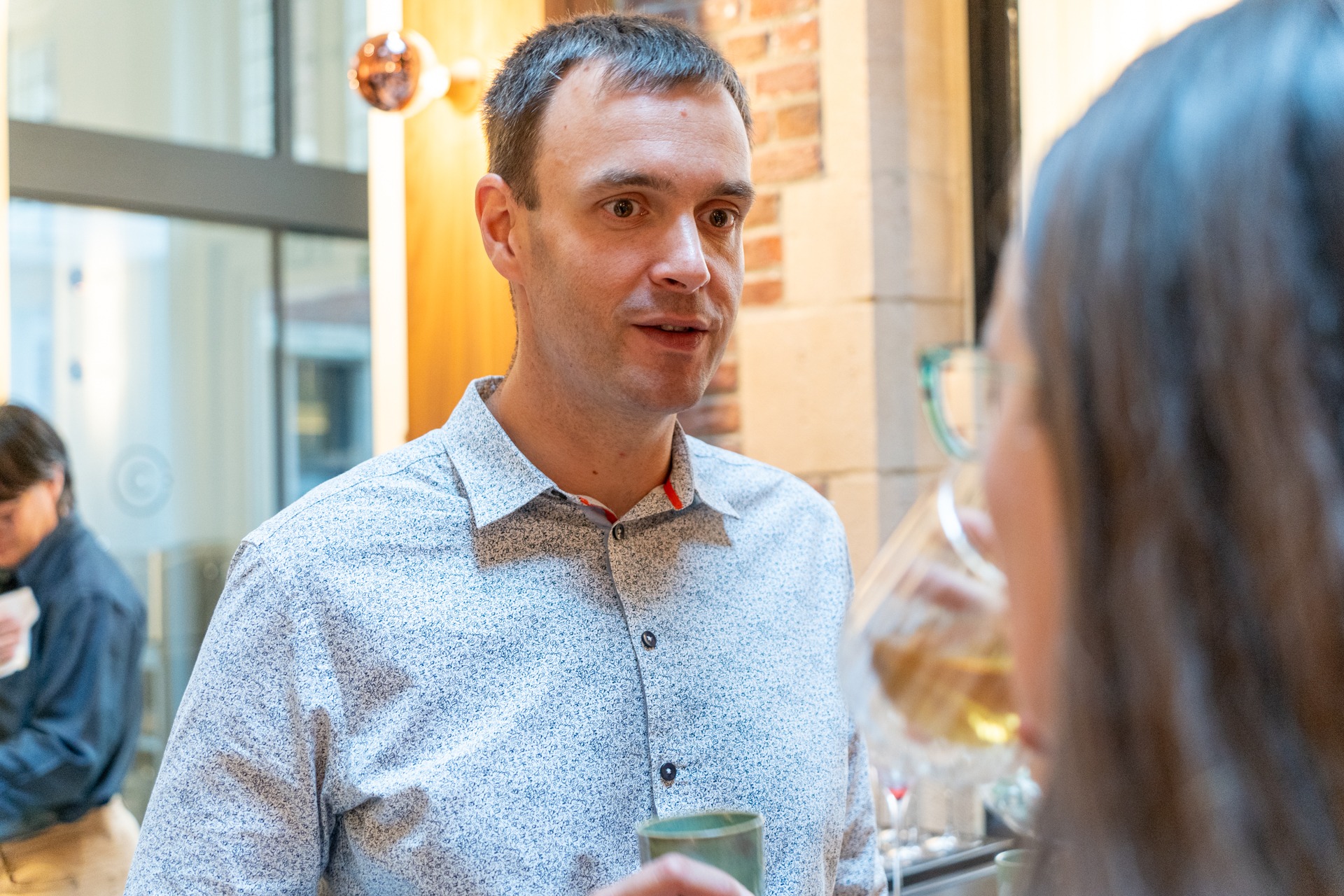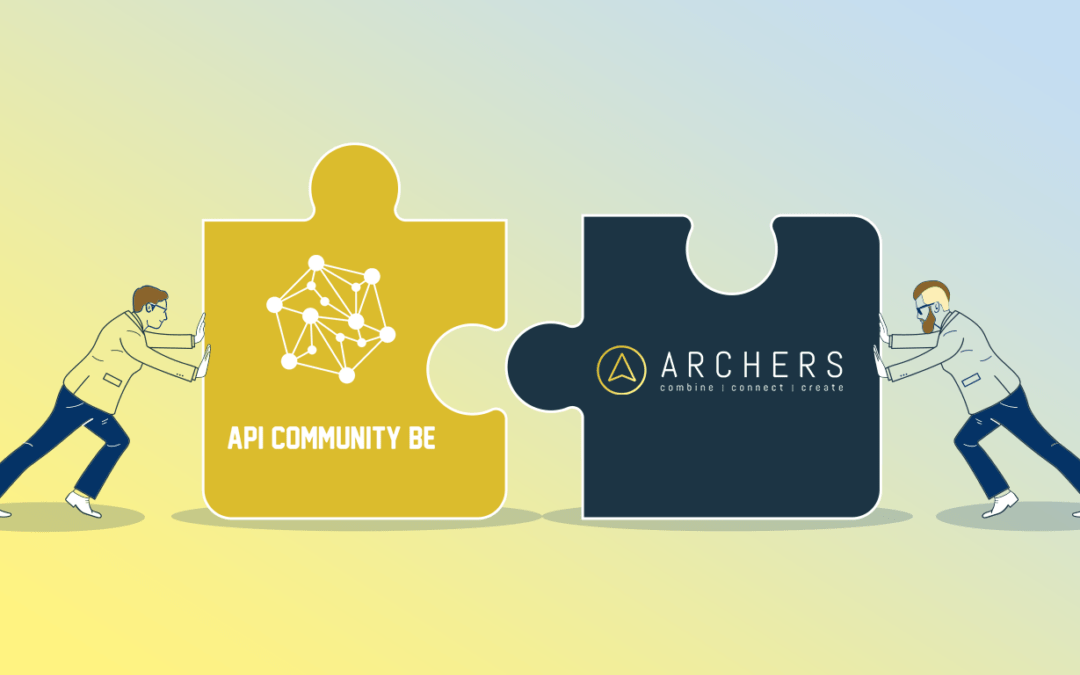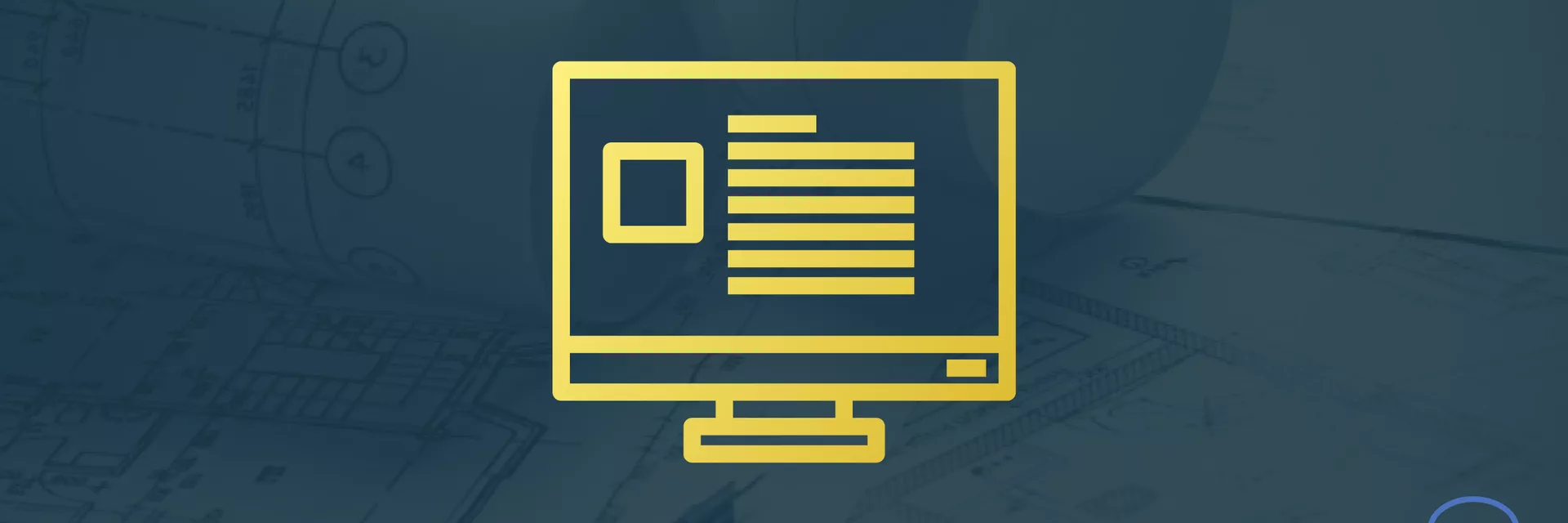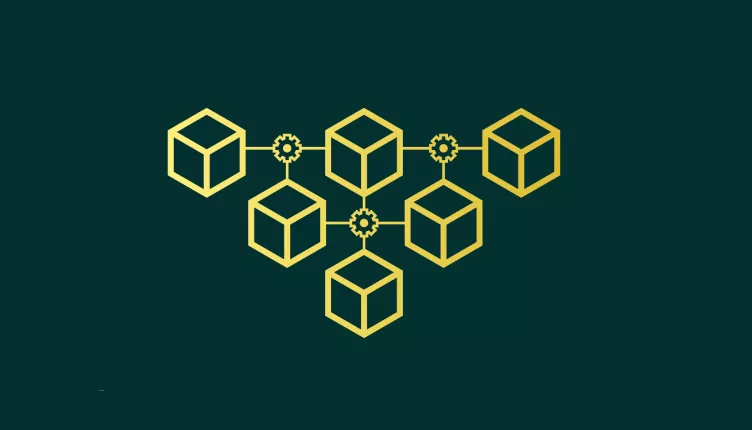On October 18, our Integration Architect and Managing Partner Matthias and Jo Martens, CTO at Symeta Hybrid, were guest speakers at the very first live meetup of the API Community Belgium – after many virtual ones! An evening where API enthusiasts and thought leaders got the chance to share insights and discuss trending topics within the field.
Symeta Hybrid and Archers share a strong partnership and common vision on APIs and a future-proof IT-landscape. That’s why we were very thrilled to give this session together at the API Community!
From transactional to conversational: the main topic of the evening. An impactful shift taking place in many sectors, powered by APIs. A shift in which Symeta Hybrid is also taking big steps together with the Archers integration experts. Read below the story of how Symeta Hybrid made the shift from a native paper player into a digital-first follower.
Who is Symeta Hybrid?
Symeta Hybrid is part of the Colruyt Group ecosystem and offers customized solutions for incoming and outgoing document flows by creating smart and secure document and communication solutions.
They are active in two fields:
- Direct marketing – think of promotional brochures based on buying behavior, birthday cards, leaflets and digital channels.
- Transactional communication (for the external market) – think of invoices, payment slips, insurance policies… Process driven documents with a very high volume and zero tolerance for mistakes. “You don’t want your pay slip to end up with your colleague and you don’t want to get the invoice from someone else. You don’t want to mix things up. It’s a very quality driven process.” Jo explains.
Architecture vs. Strategy
“Let’s take you on a trip on how Symeta Hybrid defined a strategy to realize the shift towards conversational communication” Jo kicks off.
Defining an architecture is always the starting point in the realization of a strategy. Think about a building, a city, a piece of software… the building process always begins with drawing an architecture. Which acts as a mental model to realize the predefined strategy. Mental models represent how something works and determine how you interact with your environment. Without them, we cannot act or make any decisions. See them as an essential tool to navigate through life.
“Symeta Hybrid is a process driven native paper player’, Jo introduces. “A factor that determines our dominant paradigm of how we look at transactional communication and direct marketing. How we interact with technology will always be in function of our mental model of the technology and the organization. “
Interacting with consumers takes place with a combination of channels. For example, invoices can be sent out digitally (email), or on paper (with an QR-code to pay directly). “This whole process is centered within an integrated platform” he explains.
PLATFORMS & ECOSYSTEMS: THE ROAD TO SUCCESS
Platforms and ecosystems are growing at tremendous rates. But let us first set the differences clear:
- Ecosystem: “Interconnected set of companies and organizations that allows users to fulfill a variety of needs in one integrated experience.” One of the most widely known ecosystems is Amazon. “They know a lot about our buying behavior. Based on those insights, new services and brands get launched. Colruyt Group does something similar, but more as a Japanese gardener with a strong emphasis on respect, fairness and transparency”, Jo adds.
- Platform: “A business that operates within a physical or virtual place to help two or more different groups to find, co-create, interact, and exchange with each other.” The most widely known platforms are Uber or Airbnb – they are supply-demand driven.
So the real one million dollar question is: can you design an ecosystem?
Let’s take a closer look on how these platforms and ecosystems operate:
- User experience: platforms and ecosystems stand or fall with user experience. Users don’t look for ownership or possession but pay for access.
- Computing costs: drop in price as computing power grows, making it an accessible strategy for a constantly increasing group of organizations. But this is also causing questions to be raised about energy consumption and sustainability.
- Unbundled utility: offering very specific functionalities to customers.
What are the drivers of those platforms and ecosystems? And if you have one, what makes it successful?
- Network effects. Jo explains “In 2007, I was one of the early adopters on LinkedIn. But not much happened there. LinkedIn was not very valuable those days. Look at LinkedIn right now, it’s huge! A massive group of professionals joined the network. That’s what you call network effects.”
- Learning effects, he continues: “Network effects are amplified with learning effects. For example, Spotify and Netflix. Artificial intelligence empowers custom recommendations and interfaces, based on our behavior. This requires an immense amount of volume and data. Without that network and learning effect, you can create a product, but not an ecosystem or platform”, according to Jo.
- Cross-Industry: “Let’s take LinkedIn as an example again: they introduced training and education functionalities, even though it’s not their core business. As a result of the network and learning effects, they can diversify and go into other industries, while strengthening the user experience” Jo explains. ”Many platforms today do this: Airbnb, retailers, banks… You can wonder if it’s useful or not, though, they win data and learn from it, offering them a massive value and competitive advantage.”
- Scope versus scale. “Don’t focus on scope, focus on scale. Focus on gaining massive amounts of data and operate on a huge scale.” he concludes.
THE REASONS FOR ACTION FOR MADE SYMETA HYBRID
As stated before, the future is digital and conversational. Symeta Hybrid is moving from paper – which is transactional – into conversations. “Many people experience problems with their energy bills today”, Jo explains, “today, this is a purely transactional process. When moving into a conversational mode, you can split huge bills up, make proposals based on customer segments etc. Insert automation and this whole process starts to feel more like a conversation. It’s tailored to our personal needs, not the needs of an entire population.”
The key advice Jo offers us: “Don’t take your living room for a boardroom. Mistrust your own environment. Your peers don’t represent the market. Four out of ten Belgians are at risk for digital exclusion, paper plays an important role for this group. Take this into account when designing conversations!”
Another reason for action is changing user behavior and a rapidly evolving technology landscape. This offers us many possibilities: you can go for scaling, you can go into expanding your network, you can go for ease of integration… Resulting in a shorter innovation cycle.
“Within an innovation cycle, there’s always a cliff point and a tipping point. Our revenue model was based on the amount of paper invoices – counted per thousand. An amount that kept on dropping slightly. Symeta -Hybrid had to launch their brand-new IT services before the revenues of paper services would drop significantly. In other words, before we reached the cliff point.” Jo explains.
Today, Symeta Hybrid acts as a channel orchestrator that deploys channels and touchpoints (print, email, SMS…) and corresponding functionalities (subscribe, update, buy, pay), in function of business targets (cash early, lower cost to serve per contact…) on specific business processes (onboard new customers, invoices to cash, direct marketing processes…). “It’s our goal to orchestrate all those different channels, while focusing on the goals and not the means”, Jo concludes.
All those things need to be built as well. And that’s where Archers enters the picture. “You need to create an IT landscape that that is able to support that vision to turn this into reality. But how do you actually start building that?” Matthias kicks off.
How is Symeta Hybrid building their vision technically?
CONVERSATIONS
The future is conversational. But how to define a conversation? In the context of real life, it’s an easy concept to grasp: a conversation has a clear start point and end point, it’s the result of a series of one or more actions and it’s one-to-one. Which is equal to an IT conversation.
However, an IT conversation is more complex because a ‘conversation ID’ enters the game. An IT- conversation is treated as a unique object: we need to be able to refer to it, interact with it and know its state. Resulting in the attribution of a unique conversation ID. A conversation is a sequence of actions that each in turn push the conversation forward – an SMS, email, WhatsApp message, maybe even a TikTok, Snapchat and so on. These actions happen at a certain point in time. This means actions can be:
- Scheduled
- Triggered (automatically) by an event
- Triggered by conditions that become true
This is the point where IT conversations start to differ from real life. In real life, we’re not actually going to set a timer to start talking to someone or to do something. Within an IT-conversation, we add a logic of orchestration that initiates an action when certain conditions are met “For example, when a payment is not received two weeks after sending a payment letter, an SMS with a payment link can be sent out automatically. Usually in natural conversations between human beings, we’re not going to have this kind of orchestrated logic.” Matthias explains.”
“These conversations need to be stored and managed at all times. We need to know where we are in the conversation with a certain customer, we need to know when we need to do something and what we need to do at that point. In other words, we need to be able to grab the conversation, see the state and act upon it.”
The actions come with a connector. A connector allows the conversation to call in actions at a certain point of time, by making them smart. Of course, input and output must always be provided. “For example, when you plan to send an SMS to a consumer: you’re not going to just send the same message each time. You need the right parameters, the right name and add a specific payment link into it…” Matthias explains.
That’s where the Archers Architects introduced “reusable building blocks” that can be parameterized. This way, personalized data like the receiver’s name, a specific message – all wanted data – can be used in communication with customers. Feedback (e.g., a send report) can be preserved in a dashboard, providing the necessary insights in the conversation.”
“In everything we modelled, we tried to get it as conceptual as possible to get it valid enough.” Jo adds “We’re introducing a whole new concept: the process of storage at any time, the way the databases are structured, how we capture data… It’s a learning curve which can only become successful by group efforts, which makes it so interesting!” Jo concludes enthusiastically.
BUILDING BLOCKS
This building blocks make it possible for Symeta Hybrid to implement this into different business processes within different departments. Enabling all specific departments to shift towards a conversational mode and follow up on their own customers.
The building blocks are comparable to Lego blocks: by creating reusable and configurable blocks, Symeta Hybrid can build anything they want. Cherry on top: they’ll need less technical manpower in doing so, only the configuration of these blocks must be done.
Those building blocks get parameterized: who, what message, what extra needs to be added… etc. to execute the right action. All those actions fit into a conversation process, which can be tracked and measured in a dashboard.
“In designing the business processes and architecture the users of the building blocks – the customers – point of view always acted as the starting point. Instead of thinking purely from a systemic or architectural view.” Jo adds.
ARCHITECTURAL PRINCIPLES
To build those reusable block and design reusable models, some architectural principles were established:
- Cloud first principle: demand will always fluctuate. To scale up in number of customers and in the demand of current customers, the cloud is always the best option to go for. The cloud enables you to change your capital expenses to operational expense.”To build up the necessary expertise, we recommend the composition of an internal cloud center of excellence”, Matthias adds.
- Market driven approach: although the market is in constant evolution, we described the core processes of our value propositions into conceptual models that have a number of attributes that remain relative stable over time, channel and technology. It’s of indispensable value to capture market demands and to implement the gained insights. Different connectors make a conversational mode possible, resulting in tailored communication.
“For example, the younger generation is more attached to their smartphones and likely prefer to receive their invoice through an application. While the older generation might prefer a paper invoice. By using those connectors as building blocks, you can consider the needs of the customers at all times.” Matthias explains.
- Data is an asset: this conversational platform allows Symeta Hybrid to learn about its consumers’ behavior – which again enables the customers to better understand their customers’ behavior. Remember the network and learning effects we talked about? That’s exactly what’s happening here as this enables better service delivery and sales growth.
- Configuration over development: the building blocks act as generic blocks. They are not coded to function in a specific context but are built for easy configuration. Meaning that they are specially designed to operate into all kinds of different contexts. They don’t need to be managed, maintained, and configured individually – which saves a massive effort. When they are more generic and configurable, they can evolve as a solid product.
- Shippable products: products are built with a solid base and a zero tolerance for mistakes. meaning once it’s launched in the market, it’s trusted and customers can interact autonomously with it.
All of this empowers the concept of APIs as a product, meaning:
- APIs living in the cloud.
- APIs created in function of user’s insights and market demands and leveraging data to reinforce existing and future services.
- Easy to configure APIs that can be used and applied in different contexts within the conversation.
- APIs that can be ready, shipped and have a long-life cycle.
For the true technical fans ;): all of this is built on the Microsoft Azure Platform with APIs that function as entry points into the landscape and interact with: conversation APIs, notifications APIs, conversation history… Behind lies the high-level architecture used to design conversations. To store and retrieve these unique conversations, their state is saved into the Azure Cosmos DB. In addition, services are added that contain logic about scheduling, the content, the notifications and much more – an automation flow implemented in Logic Apps. To provide events that trigger connections, the event grid is used.
Conclusion:
Now rests the one million dollar question “can you design an ecosystem?”
Jo answers: “I think you cannot as it’s all about emerging strategies: you can follow architectural principles and add valuable and freshly gained knowledge to the mix and embed it into different teams. Connect the dots and see what happens. Often, that’s all you can do. An ecosystem is not just designed. There is no big plan.
Get started, use the right principles, stick to them, learn and adjust!
Matthias agrees. “You cannot just create an ecosystem from scratch, release it onto the market saying ‘here is an ecosystem’ and expect it to be successful. You have to become part of the ecosystem, put services out there that add value and that are in demand, attract partners to cooperate within the ecosystem, and build it up gradually. Step by step along the way to a conversational future.”
Ready to take the first steps towards your conversational future? Let’s talk!
Some more integration blogs for you
ALWAYS LOOKING FORWARD TO CONNECTING WITH YOU!
We’ll be happy to get to know you.









